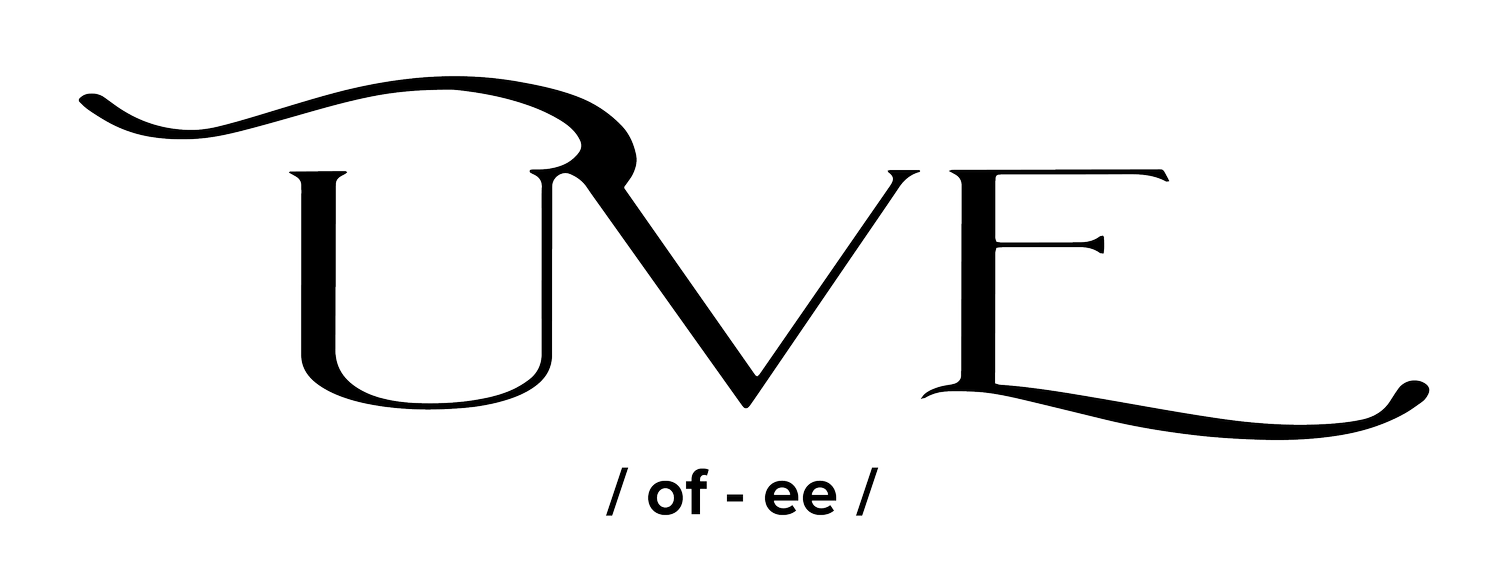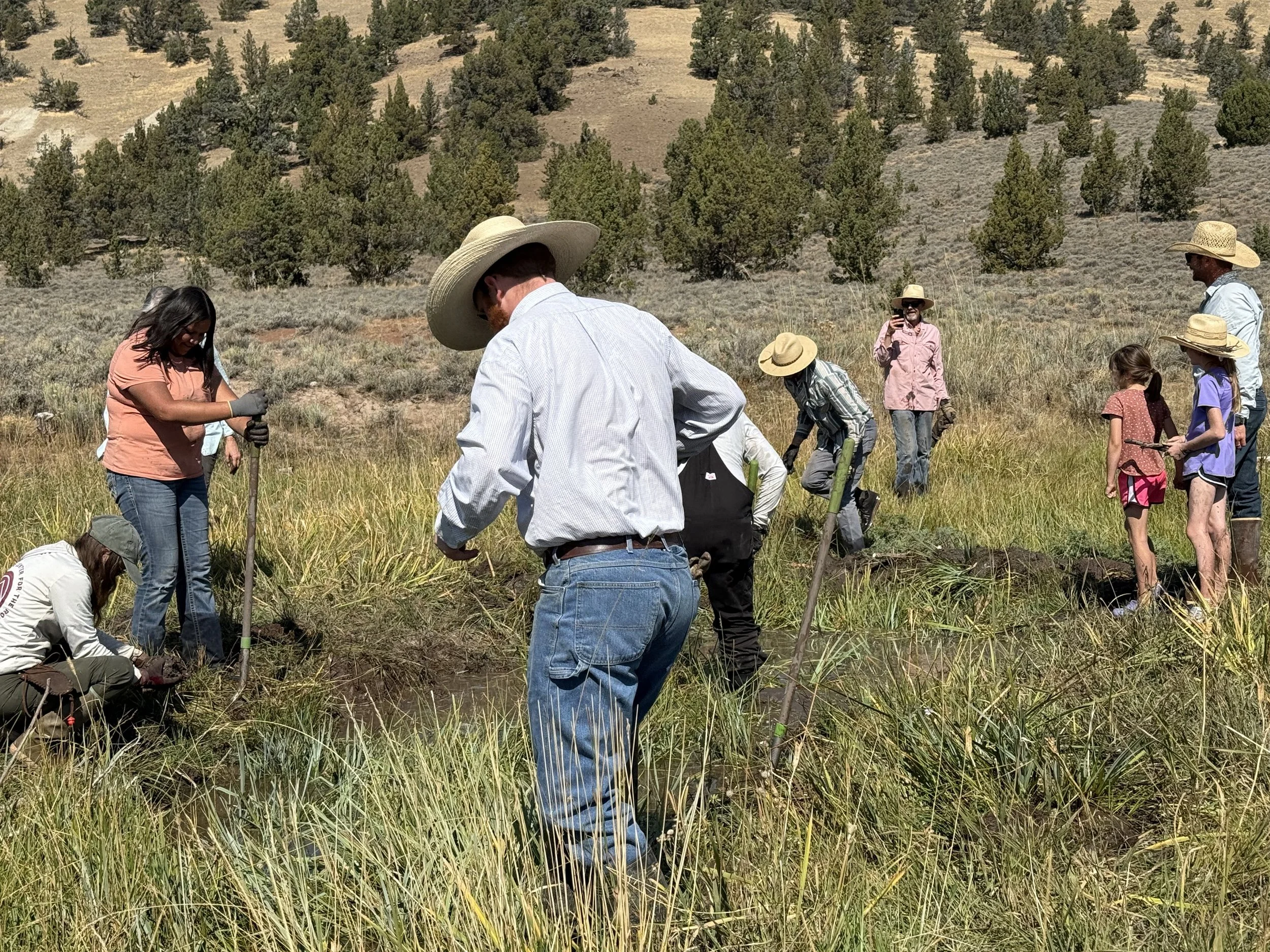Giving a Dam: A Day of Stewardship and Engagement Restoring Floodplains by Mimicking Beavers
By Andrea Malmberg
On a lovely day in Oregon’s high desert, as summer was melting into fall, I was fortunate to attend a workshop that brought together land stewards (ranch owners, managers, children, and organization/agency folk) at the working ranch of the Hatfield Hyde Land Trust. Becky and Taylor Hyde’s eastern Oregon ranch exemplifies regenerative land management: a working operation where ecological health, agricultural productivity, and the nurturing of a quality of life within their family go hand in hand. I’ve known Becky for years, meeting her when we were in our twenties, and she was advocating for regenerative agriculture before the term existed. Over the last year and a half, I have had the honor to work with Taylor’s extended family through an UVE engagement. Taylor and Becky’s openness to experimentation, willingness to host hands-on learning in the field, and genuine care for soil, water, plants, animals, and place set a powerful tone for the day.
Tony crossing Twin Creek on a beaver dam
My late husband, Tony, first despised the beaver like most ranchers in the West do. Practical management challenges as a rancher in Wyoming's sagebrush steppe inspired him, and made him an advocate for beavers. In his book “Green Grass in the Spring,” he shares how these engineers re-activate floodplains, improve meadow systems, enhance forage and habitat, increase biodiversity, and reverse desertification in grasslands. While many of the policies and actions of ‘The Beaver State’ in the past generally do not respect the ecosystem services these animals provide, beaver‐inspired restoration methods that we learned at the Hatfield Hyde Land Trust draw on the wisdom of the natural engineering of beaver systems. The strategic installation of Beaver Dam Analogs (BDAs) creates self-sustaining flows of water, vegetation, and life. The hope is that when we begin to re-pair these meadows and floodplains, trees and shrubs will return. With this habitat, beavers will come in, thus slowing the water cycle and keeping moisture in the soil rather than in the atmosphere.
The workshop spotlighted the approach known as “low-tech, process-based restoration” (LT-PBR), which emphasizes process over form rather than relying on heavy engineering structures. In the context of floodplain and riverscape restoration, leaders and our field day guides, Gus Wathen and Chris Jordan, have advanced this method of working with natural system dynamics.
Over the last seven years, I have been involved with trying to restore the floodplains of two highly modified creeks on our ranch in Northeastern Oregon. While all well-intentioned, the approach of our agency partners to restore rivers for endangered salmon has been highly engineered, with a heavy dose of skepticism about whether livestock can actually enhance the health of riparian areas. Learning from Gus and Chris, I saw that LT-PBR is rooted in the values of holistic, regenerative thinking:
Addressing the root cause: Rather than only reshaping a channel, LT-PBR asks why a floodplain is disconnected (e.g., incision, vegetation loss, beaver absence, roads, and other structures) and intervenes at that process level.
Scaling the problem: LT-PBR recognizes that streams and floodplains operate at the upland, valley, and floodplain scales, and that structure placement is designed accordingly.
Consistent with site: Solutions vary by valley bottom, hydrology, vegetation, and beaver presence. LT-PBR emphasizes context over one-size-fits-all.
Clearly articulated ecological outcomes: The goal is not a static “engineered look” but a dynamic, self-sustaining, resilient system that considers dynamic system function, self-sustaining mechanisms (i.e., enabling beaver, wood recruitment, floodplain reconnection), and resiliency to disturbances (drought, flood, climate change).
Function over Form: The emphasis shifts from what the structure looks like (form) to what it does (function: reconnecting water, raising water tables, enhancing riparian vegetation, supporting forage).
By hosting the workshop on Becky and Taylor’s ranch, the field day illustrated how we all can engage meaningfully in process-based restoration:
People making empowered decisions at the soil surface provide real-place context—working ranchlands where livestock, vegetation, floodplain dynamics, and management interface.
Practitioners bring LT-PBR frameworks (as advanced by Wathen and Jordan) that align with the values of holistic decision-making: diagnosing root cause, aligning interventions with site, setting clear functional outcomes, and envisioning the future resource base.
Participants walked through how to design, install, and monitor low-tech beaver-inspired structures to reinstate floodplain connectivity, enhance meadow and riparian function, and create resilient landscape systems.
The event reinforced that, for producers and land stewards, restoration is not a side project—it becomes integrated into ranching operations, enhancing forage, improving drought resilience, and amplifying ecological benefits.
We extend our heartfelt thanks to Becky and Taylor for their leadership in opening the land they steward for this important learning opportunity. Their stewardship invites a deeper engagement of producers in regenerative floodplain and riverscape restoration. And we are grateful to the workshop facilitators who carried forward the LT-PBR methodology—affirming the alignment of process-based restoration with holistic thinking.
If you are a landowner, producer, or ranch manager interested in exploring how low-tech, beaver-inspired restoration can restore your floodplain or meadow systems—and align with regenerative grazing and landscape management—please reach out. Let’s continue connecting stewardship, knowledge, and place to build resilient, functioning environments for the long term.
Andrea Malmberg
Savory Institute Accredited Master Field Professional
UVEhub.com | Bunchgrass Land & Livestock | Restorative Practitioner




